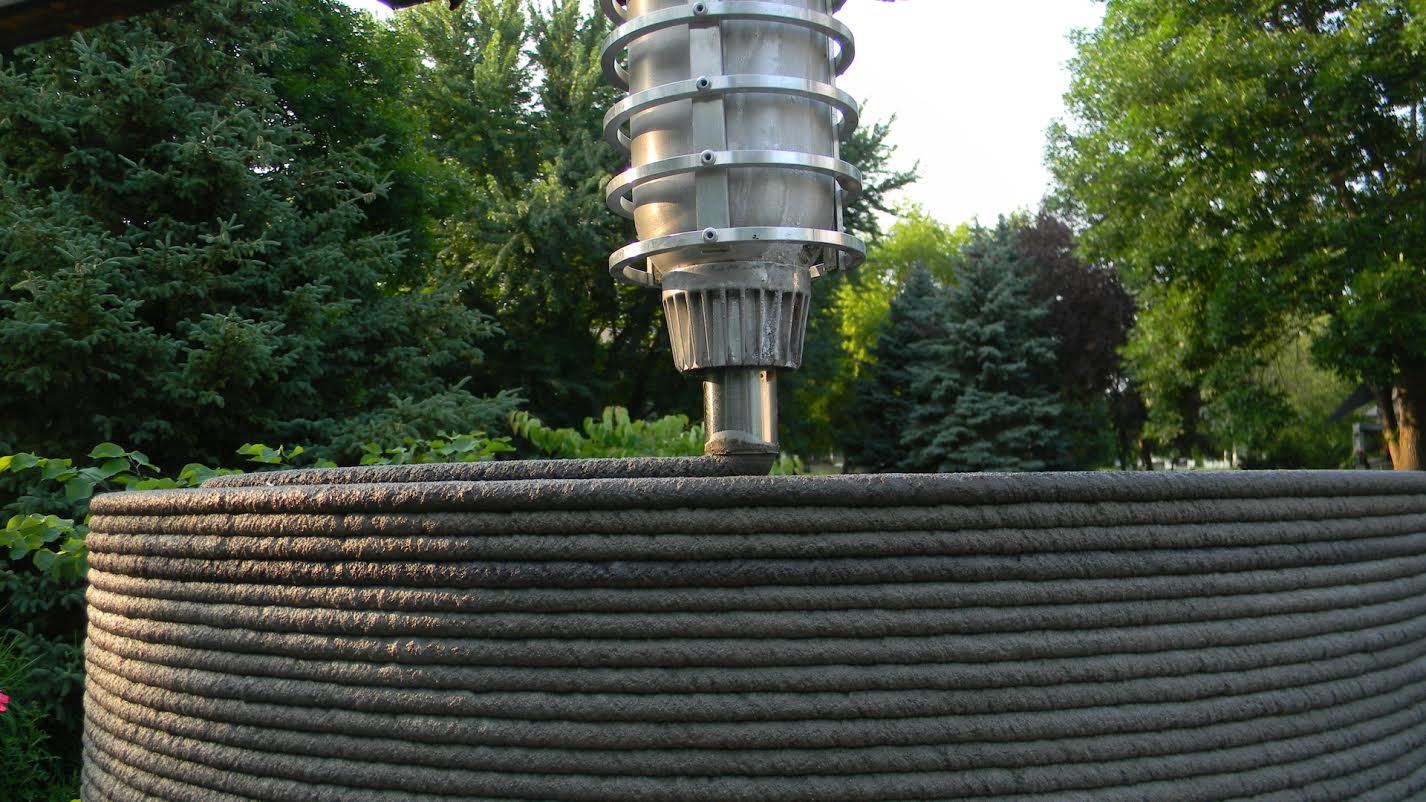Posted on April 06, 2023
The look of a curvaceous, beaded 3D printed concrete (3DPC) structure is unlike any other. It has been described as “waves frozen in concrete.” ICON’s equipment can print designs that “swoop, fold, and form half shells.”
From aesthetics to construction methods, 3DPC is radically different. This new construction method is proving to be fast, affordable, energy-efficient, and resilient. Structures resist hurricanes, tornadoes, wildfires, and heat waves.
3D Printed Concrete Buildings: a Brief History
Thousands of years of concrete buildings have taken a new turn with the arrival of 3D printing. The concept is literally “out of this world." ICON is working with NASA to develop technology to print 3D structures on the moon.
Revenue growth is also out of this world. In construction, 3D printing revenue has increased from $3 million in 2019 to a projected $1.57 billion in 2024. Those numbers represent an impressive CAGR of 245.9%.
The demand for 3D concrete printing benefits from several convergent factors:
Pressure to reduce carbon emissions
Labor shortages
Rising or erratic material costs for lumber, etc.
At SpecifyConcrete.org, we’ve already reported on the expanding 3DPC home sector. In 2018, Austin-based ICON printed a 350 sq ft home as a proof-of-concept. Now, it is collaborating with Lennar Homes to create the 100-home Genesis Collection at Wolf Ranch, a 2,500-home development in Georgetown, TX.
Comparing 3D Concrete Printers
There are two kinds of 3D concrete printers: gantry and robotic arm. Each has its advantages. Robotic arm printers offer the creative freedom afforded by six-axis printing. They excel at printing complex elements with fine detail. However, printing from a single point is inherently limiting.
By contrast, gantry-type printers offer an expanded printing area. They feature a printer hanging from a cross arm. It pivots along x, y, and z axes. COBOD states that its BOD2 printer “has printed 1, 2, and 3-story buildings with ease.” It accepts aggregates up to 8mm in size.
There's another big difference. Printers with robotic arms print continuously. By comparison, the hopper atop the nozzle of a gantry printer opens and closes at will. ICON’s gantry printer includes a 46.5 ft crossbar that glides up and down between two 15.5 ft towers. The concrete mix gets extruded out of a nozzle mounted on the crossbar. Each layer dries in about 15 minutes.
3DPC Structures: Larger and More Creative Than Ever
America’s first multi-story 3DPC home is in Houston, TX. COBOD equipment is printing the 4,000 sq ft, three-bedroom residence.
3DPC buildings have come a long way in a few years. In July 2020, Kamp C created the first two-story 3DPC house in Europe. The 295 sqft (x2?) house is 26 feet tall. In 2021, a 2100 sq ft home was completed in Oman, a country in the Middle East. It is composed of 99.55% locally sourced materials.
Advantages of 3DPC Structures
3DPC construction is quick, quiet, and less labor intensive as certain competing methods. Walls are strong and airtight.
Quick – Architectural Digest chronicles how Habitat for Humanity is now constructing 3DPC homes. In 2021, workers used an Alquist printer to build a three-bedroom, two-bath home. The actual printing took 28 hours.
Quiet – The whirring sound of a printer nozzle moving to and fro is an alternative to the pounding and sawing of wood frame construction. Some 3DPC contractors still deal with “start-stop” ordinances dictating daily construction times.
Strong – ICON states that its 3DPC walls exceed building code strength standards by an estimated 350%. Proper interlayer bonding is critical to strong, durable 3DPC structures. 3DPC concrete mixes are different from those of traditional concrete mixes.
Airtight – Like insulated concrete from (ICF) walls, 3DPC walls are virtually airtight. This makes them more energy-efficient. Triple-beaded and double-beaded walls leave room for insulation and rebar reinforcement.
Labor – 3D concrete printing is not as labor intensive as traditional wood frame construction. However, equipment operators must have specific skills. Also, setting up a gantry-style printer takes time. Getting the equipment ready to print can take a couple of days.
Materials – With a 3DPC wall, there’s no need for exterior cladding or interior drywall. Contractors may paint the walls for aesthetics and added moisture resistance.
Landfills – 3PDC minimizes construction debris earmarked for landfills. This speaks to the sustainability goals of developers, designers, and contractors.
Case Studies
3D printed concrete projects are proliferating across America and around the globe. Today, it is about more than homes and businesses. You’ll find 3DPC used for everything from wind turbine bases to military barracks.
Wind turbine base
GE Renewable Energy used COBOD equipment to print a prototype wind turbine base almost 100 feet tall. Onsite manufacturing increases the maximum height of wind turbine towers. This may increase the power generated by one-third.
Arts pavilion
The Long Center for the Performing Arts in Austin, TX, is known for its “Hartman Lawn" performances. It intends to enhance the experience with the world’s first 3DPC performance pavilion.
Military barracks
The Department of Defense lends further credibility to 3DPC with plans for three barracks at Fort Bliss, TX. Each structure will be 5,700 sq ft in size, making them the largest 3D printed structures in North America. The contractor will use an ICON printer laying down 5-10 inches of concrete per second.
Desert hotel complex
A 3D printer’s capacity to create organic curves and domes will be exploited at El Cosmico, near Marfa, TX. A variety of parabolic hut-like buildings will deliver a unique guest experience. Construction is slated for 2024.
About PACA
The Pennsylvania Aggregates and Concrete Association (PACA) reports on industry developments and innovation. The team at PACA welcomes any questions you may have about your upcoming concrete project. Please contact us today!

